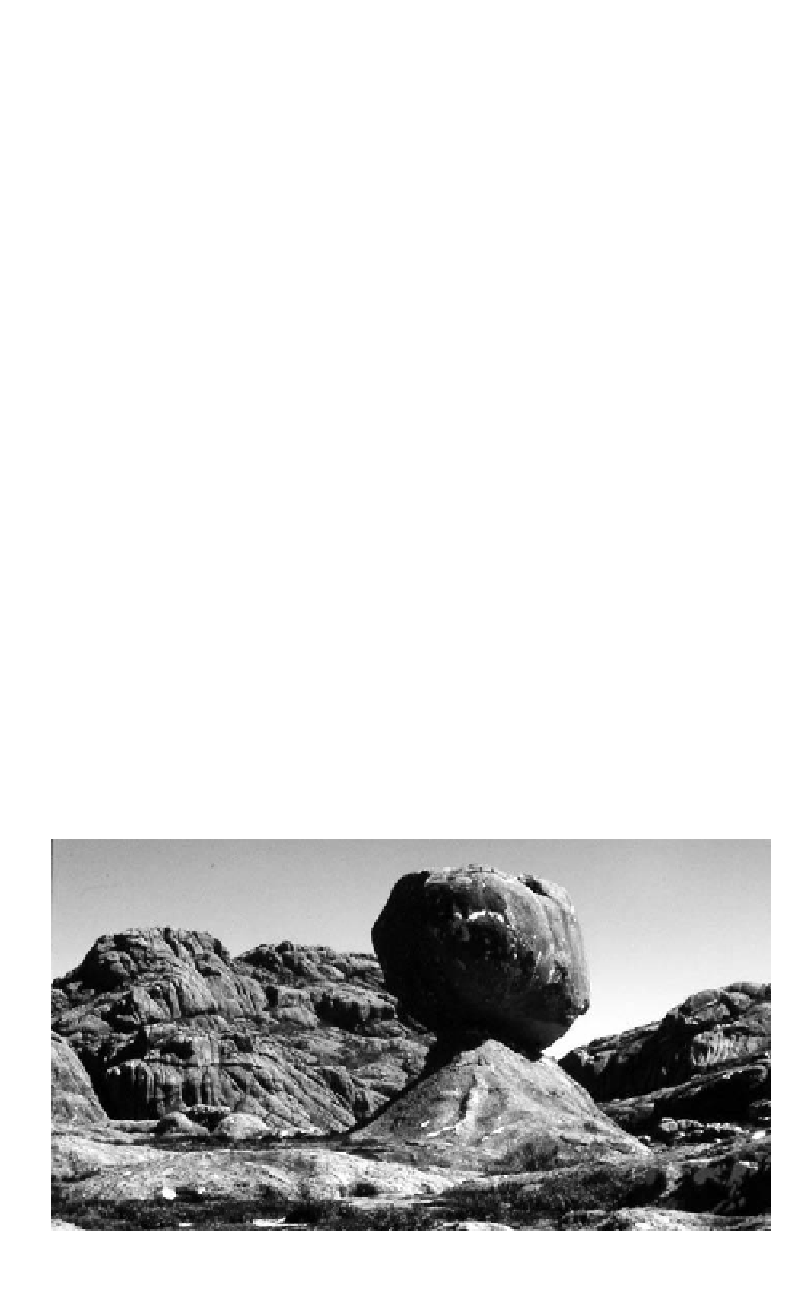Geology Reference
In-Depth Information
stand above the general level of sensibly flat platforms. Examples have been noted at
Domboshawa, in Zimbabwe, in several parts of South Australia and Western Australia, and in the
Serra do Gêrez, on the border between Portugal and Galicia, NW Spain.
9.2.2
Origin
Similar, though more dramatic, pinnacles due to the deep dissection of weak, unconsolidated or
intensely weathered materials have been described from various parts of the world. They are com-
monly attributed to the protection of the preserved acicular columns by the slabs and blocks that
cap them. Similarly, in the Serra do Gêrez (Coudé-Gaussen, 1981), glacial erratics afford protec-
tion to the underlying granite surfaces, and also demonstrate that the plinths in question must have
developed since the last glacial retreat in the area, that is, in the last 14,000 years.
Protection by the block or boulder resting on the plinth also seems to explain the latter forms.
Assuming first that the block or boulder rests on a bare rock platform, water dripping from the
edges of the protective residuals forms pools and depressions that weather the adjacent platform,
as well as spreading laterally and cutting into the basal slope of the plinth. In this way, the adjacent
surfaces have been lowered and once the depressions are linked, washing from the slope courses
through them, lowering the surface still further, and leaving the protected plinth in relief.
The effect of drip pools is convincingly demonstrated at Tolmer Rocks, in the Upper South East
district of South Australia (Fig. 9.11). There, water dripping from a large residual boulder has,
through excessive wetting and weathering of the platform on which it falls, caused the develop-
ment of a series of shallow pools, the pattern of which reflects exactly the plan shape of the boul-
der. The pools have extended laterally and merged to form a narrow, shallow moat around the base
of the boulder. Any runoff from upslope washes into the moat. Thus, the moat is deepened and
runoff from upslope is diverted. In this way, that area of the platform located beneath the boulder
is not attacked by running water as it is the immediately adjacent exposed surface. Weathering pro-
ceeds beneath the perched boulder, and the surface of the pedestal is also affected (see Chapter
10), but this is slow compared with the effects of weathering and wash on the slope as a whole.
The same mechanism is adequate to explain plinth development on platforms with a regolithic
cover, for the water dripping on to the surface would infiltrate the cover and cause the weath-
ering front to penetrate deeper forming an annular depression mimicking the plan shape of the
boulder rim.
(c)
Figure 9.10.
(c) On Amboromena Pic, Andringitra Massif, Madagascar.


